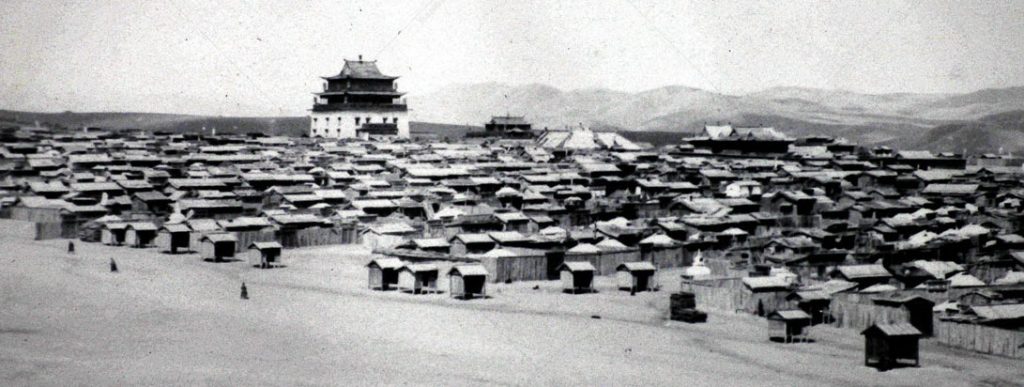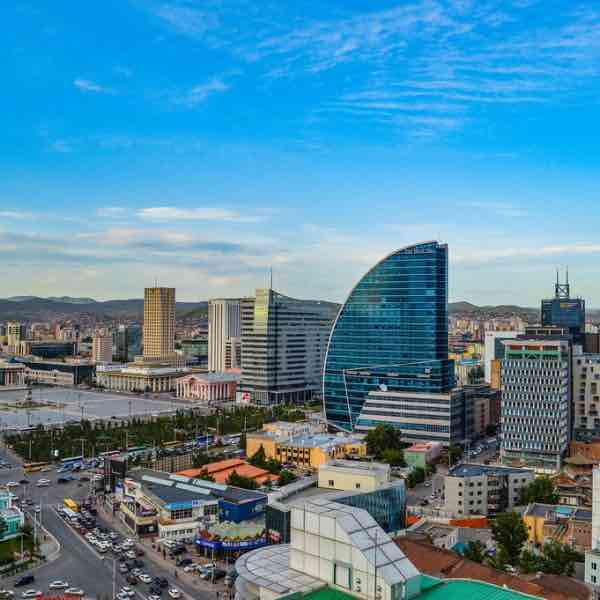About the origin and development of the city
Like nearly one half of the Mongolian population, the capital city of Ulaanbaatar is herself a nomad. The city has changed locations more than twenty times over the past 350 years before taking root in her current location in a sweeping valley bounded by four sacred peaks, including Bogd Khan mountain to the south.
Along with her location, the capital has changed names over the years, having been called Urguu from 1639 to 1706, Ih Huree from 1706 to 1911, Niislel Huree from 1911 to 1923 and finally Ulaanbaatar since 1924. But despite her many transformations, Mongolia’s capital has remained constant as the political, economic and cultural center of the nation, and as a city rich in both character and contrast.
Indeed there aren’t many world capitals in which you can ride a horse, visit a nomadic family, and enjoy fine dining and luxurious spa treatments all in the same day.

About today’s Ulaanbaatar
Ulaanbaatar today is a vibrant city of more than one million residents. The city reflects a close and sometimes amusing juxtaposition of nomadic traditions and modern society, perhaps best summarized by her skyline dotted with both gers (felt tent) and towering skyscrapers.
The city’s contrast can also be found among those who call it home, from traditional – clothing – clad herders, to Armani suit-wearing businessmen and women, to a growing number of expatriates hailing from nearly every corner of the globe.
Only in Ulaanbaatar might you find a horse cart bouncing down the central avenue alongside a Mercedes Benz, or a market selling both livestock and designer clothing. In short, there is something for everyone and always a site to behold in Ulaanbaatar.
If cities have a heart and they certainly do, then the heart of Ulaanbaatar is Sukhbaatar Square. This sprawling plaza situated in front of the capital building, is The PLACE where residents and visitors gather for celebrations, exhibitions, and concerts, or just leisurely stroll with friends. Running along the southern edge of the square is Enkh Taivny Orgon Choloo (Peace Avenue), Ulaanbaatar’s main thrughfare , which spans from East to West across the city.
On Peace Avenue, you will find a myriad of shopping hotspots, selling everywhere from cashmere, to antiques and souvenirs, to high fashion couture. You’ll also find a surprising variety of restaurants, bars and cafes, serving up Italian, French, Korean, Chinese, Turkish, American and Mongolian cuisines, to name but a few.

Besides serving as the jumping-off point for all travel throughout the country, Ulaanbaatar has much to offer visitors. The city’s eighth museums are bursting at the seams with treasures such as, 3000 years old Hunnu artifacts, prehistoric dinosaur bones, and Chinggis Khaan-era armor and weapons.
Dozens of cultural venues throughout the city present daily performances of dance, theater, music and contortionism. The city is also home to one of the world’s largest open air markets, Narantuul, with more than 250 vendors selling everything under the sun.

